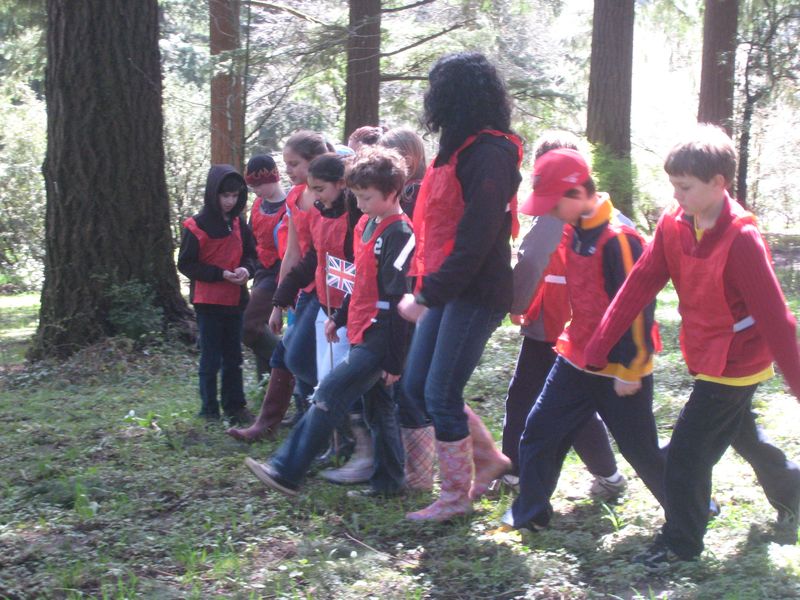The French and Indian War

In 1754, Great Britain and France went to war over land claims in North America. While Great Britain had the thirteen colonies along the Atlantic Ocean, France had claimed much land to the west, and Great Britain wanted that to change.
The French and Indian War is rarely studied in elementary school classrooms, but with our focus on the 1750s and the route we have chosen to follow in our project, we cannot ignore it. The war lasted for nine years. Some historians call it the first World War since it was fought on fronts in nearly all of the 13 colonies and in Europe and India.
This war did much to shape the identity of the colonists and to set the stage for the very acts that lead the colonists to declare their independence. As a result of this war, both France and England took on a huge amount of debt. The resulting taxes placed by Europe on exports to pay off these debts is the very thing that triggered the Revolution. In this war, the colonists developed their ability to build, sustain and manage an army, and their confidence to do so without British support. The great military leaders of the Revolution got their training in this war, including George Washington.
When the war was declared in Opal 3 on Monday, the first thing the students discovered was which side they were on. If you pulled a card that said British, you were either a colonist or an English regular soldier, but you were all under the command of the English army. If you pulled a card that said French you might be a French soldier just arrived from France, a French trapper who had been living in the American wilderness among the Native Americans for some time, or an Algonquin Indian fighting alongside the French.
King George of England took this war seriously and decided to send Major General Edward Braddock to America to lead the English colonial forces. The first battles of the war took place in Pennsylvania, er, the Hoyt Arboretum.
Amy took us out to the arboretum and walked the boundaries of the battlefield, er, capture the flag field with the soldiers. We took careful note of the swamps, trees, shrubbery and terrain. (And note of what the trillium look like in bloom to make sure we didn’t injure them.)
Readying for Round One
Flags and uniforms were distributed: red for the Red Coats (the British) and yellow for the French.
Major General Edward Braddock (Levia) drills his troops. “Attention! This will be a gentlemen’s war! We will stand in rank throughout the raid. You will have your musket and bayonet at the ready, and under no circumstances will any of you break rank. Do you understand?”
Students: What?
Braddock: We will stand in rank, shoulder to shoulder. We will move and fight as one unit. No one will break rank, leave the line, unless a surrender is called, in which case we will fully retreat, that is run away as a line. Do you understand?
Max: Are you crazy?
Braddock: This is a gentlemen’s war! This is how it’s done! Now line up and let us drill. Forward, march! Left, right, left, right, and halt! About face! Now we are ready to face the enemy. Charge!
Most of the British army is captured immediately (we had one defector!) and Braddock met an untimely end. Some even said that the white X he wore on his red uniform seemed like a target at which the enemy could aim.
Round Two
The English learn the hard way that they have to learn about this new style of battle called “ambush style” fighting. They went to convince the Iroquois Indians to ally with them and to teach them how to prepare for an ambush style battle.
The Iroquois are hard to convince. They say they don't want to fight someone else's war nor do they want to fight against other Native Americans, but eventually they agree and teach the British how to fight ambush style.
The second battle was a draw. The English learned a lot from the Iroquois and are prepared to reenter the battlefield, and honor the crown with their bravery.
When we reentered the classroom, the students had a chance to write reflections from the first day of battle:
April 12, 1754
French and Indian War
As you can see, my journal has been ripped by the bloodthirsty Algonquin savages during the war. Braddock was an idiot to think that it was a “gentlemen’s war” with these savages. I was watching with my militia when General Braddock and his troops were crushed by French camouflaged soldiers and their Algonquin allies. Thirty Indians and 50 French soldiers came up behind my Philadelphian militia, and we fought back but were slaughtered by the plaguey army of New France. Around us 23 French soldiers lay dead, another 9 wounded, and 17 Algonquins were on the ground leaving 49 men down. Five militia men and I escaped, while my other 44 men lay dead. We six are being hunted and my journal has been recovered with one written page in it. I very much fear of Algonquin tortures if we are captured.
- Ross, age 11, English Colonist Militia
April 12, 1754
War!
Redcoats were sitting ducks, marching along with big targets on their chests. I was a prisoner. They got better. We won.
- Maxx, age 10, French trapper / soldier
Below we catch the French troops planning their next attack. How will future battles unfold?





